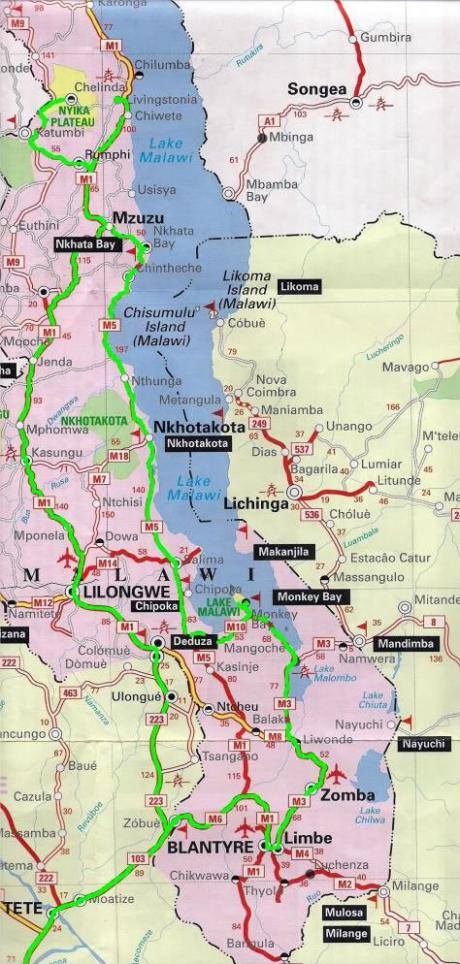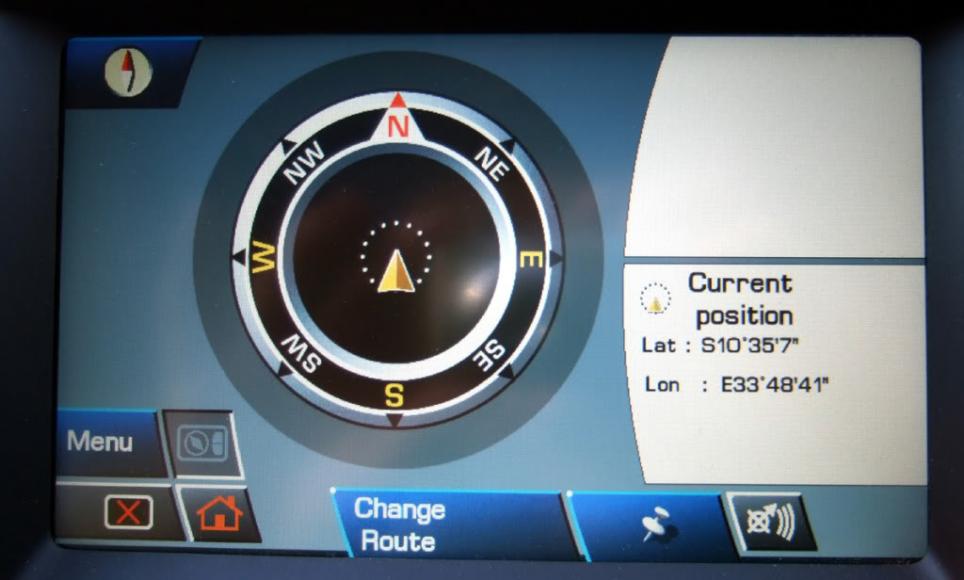Hi all,
After consultation with a VWWatercooled moderator, I feel comfortable in contributing the following series of posts. It concerns an overlanding trip - in think in your neck of the woods you call it "Trekking" - and this is the pre-amble to the trip.
I will add some additional information to what was posted locally to give you an understanding of the mental block that has to be overcome (mostly by your wife...) in accepting the perceived/actual dangers and the diseases which could kill you if contracted and not diagnosed in time (but for which you do take precautions prior to leaving) - as part and parcel of such an expedition.
An alternative title could be: "An introduction to ovelanding in Africa", and could provide a basis should any non-Africans ever consider such a trip.
Where currencies are mentioned, it is done in South African Rand. If will in time edit this to dollar, but for now, just divide by 7 to do a close-enough practical conversion.
Although no VWs took part in this trip, a Tiguan with a roof-rack could have also covered the terrain, albeit a bit more careful over the really bad gravel sections. But there were not very many of these.
The exception would be Jimbomort, who could of course throw all caution to the wind, and keep up with the rest of us. What the heck, he could kick dust in our faces .
.
So here goes:
We arrived back home safely on the 15th of July after a 23 day round trip to Malawi with a convoy of 3 vehicles - Colt 2.8 Diesel double cab pick-up, Toyota Fortuner 4l V6 with Echo 4 offroad trailer and our HSE 3.2 i6 Freelander 2.
As a brief summary of what will be a more detailed trip report over the next week or so, the following:
The scanned map is courtesy the AA Mozambique/Malawi map: MNE-7, doing a clockwise circuit with two compulsory backtracks.

The route comprised border crossings at Beitbridge, Machipanda, Dedza and Zobue, and covered a distance of 5625km for ourselves, although the other convoy members travelled further - Johannesburg and Ceres, respectively.
The Freelander returned a consumption of 8.12 km/l at a fuel cost of R8359. Our average speed was quite low, but the roof luggage accounted for at least 1.5l/100km increased consumption.
Generally fuel is cheaper across the border than here, but the exchange rate you get when drawing money at an ATM robs you of the advantage. E.g., at a Standard Bank ATM in Lilongwe, you will get 21.5 Kwacha for a Rand, but an exchange rate of K24 is easily achievable - just not at the bank.
Also, we entered Malawi 5 days after the latest fuel shortage was announced. We knew this before we started off, but was not going to let a triviality such as this stand in our way. This however meant that on occasion we had to buy fuel on the black market as the pumps were empty - generally because the black market dealers had bought up all the fuel.
The prices were therefore inflated, but not horribly so, ranging from 20 - 30% above pump price. We all had spare fuel - myself 20l under the boot floor - but never had to use this.
Attached picture shows the furthest north we went, to the Nyika Plateau. Google Earth should give you a good idea of where this is. I would like to know if anyone has been closer to the equator in Africa, in a similar vehicle.

We stayed in three adjoining chalets, and the visitor's book in our neigbouring unit, had an entry by Kingsley Holgate - the Land Rover anti-mosquito drive champion - who had also recently visited there.
This does not necessarily mean that Mr Holgate can now swop his Discovery for a more nimble Freelander 2, but I would like to think so.
More detail will follow when the journey is broken up into a number of destinations: Lilongwe, Nyika, Livingstonia, Lake Malawi west coast, Cape Maclear/Domwe Island, Zomba, Zimbabwe Ruins and of course the journey and stop-overs.
It will include info on road conditions, how to get fuel when the pumps are dry, accommodation, food, and images of the places visited.
After consultation with a VWWatercooled moderator, I feel comfortable in contributing the following series of posts. It concerns an overlanding trip - in think in your neck of the woods you call it "Trekking" - and this is the pre-amble to the trip.
I will add some additional information to what was posted locally to give you an understanding of the mental block that has to be overcome (mostly by your wife...) in accepting the perceived/actual dangers and the diseases which could kill you if contracted and not diagnosed in time (but for which you do take precautions prior to leaving) - as part and parcel of such an expedition.
An alternative title could be: "An introduction to ovelanding in Africa", and could provide a basis should any non-Africans ever consider such a trip.
Where currencies are mentioned, it is done in South African Rand. If will in time edit this to dollar, but for now, just divide by 7 to do a close-enough practical conversion.
Although no VWs took part in this trip, a Tiguan with a roof-rack could have also covered the terrain, albeit a bit more careful over the really bad gravel sections. But there were not very many of these.
The exception would be Jimbomort, who could of course throw all caution to the wind, and keep up with the rest of us. What the heck, he could kick dust in our faces
 .
. So here goes:
We arrived back home safely on the 15th of July after a 23 day round trip to Malawi with a convoy of 3 vehicles - Colt 2.8 Diesel double cab pick-up, Toyota Fortuner 4l V6 with Echo 4 offroad trailer and our HSE 3.2 i6 Freelander 2.
As a brief summary of what will be a more detailed trip report over the next week or so, the following:
The scanned map is courtesy the AA Mozambique/Malawi map: MNE-7, doing a clockwise circuit with two compulsory backtracks.

The route comprised border crossings at Beitbridge, Machipanda, Dedza and Zobue, and covered a distance of 5625km for ourselves, although the other convoy members travelled further - Johannesburg and Ceres, respectively.
The Freelander returned a consumption of 8.12 km/l at a fuel cost of R8359. Our average speed was quite low, but the roof luggage accounted for at least 1.5l/100km increased consumption.
Generally fuel is cheaper across the border than here, but the exchange rate you get when drawing money at an ATM robs you of the advantage. E.g., at a Standard Bank ATM in Lilongwe, you will get 21.5 Kwacha for a Rand, but an exchange rate of K24 is easily achievable - just not at the bank.
Also, we entered Malawi 5 days after the latest fuel shortage was announced. We knew this before we started off, but was not going to let a triviality such as this stand in our way. This however meant that on occasion we had to buy fuel on the black market as the pumps were empty - generally because the black market dealers had bought up all the fuel.
The prices were therefore inflated, but not horribly so, ranging from 20 - 30% above pump price. We all had spare fuel - myself 20l under the boot floor - but never had to use this.
Attached picture shows the furthest north we went, to the Nyika Plateau. Google Earth should give you a good idea of where this is. I would like to know if anyone has been closer to the equator in Africa, in a similar vehicle.

We stayed in three adjoining chalets, and the visitor's book in our neigbouring unit, had an entry by Kingsley Holgate - the Land Rover anti-mosquito drive champion - who had also recently visited there.
This does not necessarily mean that Mr Holgate can now swop his Discovery for a more nimble Freelander 2, but I would like to think so.
More detail will follow when the journey is broken up into a number of destinations: Lilongwe, Nyika, Livingstonia, Lake Malawi west coast, Cape Maclear/Domwe Island, Zomba, Zimbabwe Ruins and of course the journey and stop-overs.
It will include info on road conditions, how to get fuel when the pumps are dry, accommodation, food, and images of the places visited.

Comment